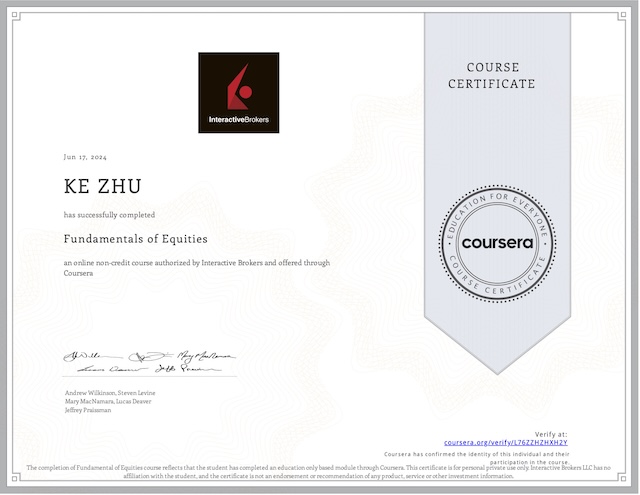Overview of Gains and Losses
At a very high level, it’s important to be able to calculate the gain or loss upon selling or exchanging an asset. Because, of course, gains are taxable and losses are deductible. That is, these kinds of property transactions will affect a business owners tax liability. In general, how do we figure out the gain or loss on the sale, disposition or exchange of an asset? The general model is
Amount realized
- Adjusted basis
= Realized gain (loss)
- Postponed / deferred gain (loss)
- Tax-free gain (disallowed loss)
= Recognized gain (loss)Amount realized is basically what the seller receives from the buyer upon giving up the asset, less any selling costs, in other words “what the taxpayer got”. Based on the definition, its formula is
Amount realized = Cash received
+ Fair market value (FMV) property received
- Reasonable expenses (advertising, commissions, legal fees, etc)FMV property could include a variety of items:
- Note receivable (or installment contract).
- Any seller’s liability disposed of, if the buyer assumes the liability. Or the property is sold subject to the liability. If a buyer assumes the seller’s liability, the seller increases the amount he or she realizes in this transaction.
- Real property taxes imposed on the seller, but paid by the buyer. This creates value to the seller and, thus would increase the sellers amount realized.
Adjusted basis is the tax basis or the net book value of the asset on the balance sheet. The difference between the Amount realized and the Adjusted basis will give us the Realize gain (loss) or also called economic gain (loss).
Recognized gain (loss) is what actually gets reported on the tax return. The difference between the Realized gain (loss) and the Recognized gain (loss) includes two parts:
Postponed / deferred gain (loss), although the gain might be realized in the transaction, maybe you don’t have to report it on the tax return until some point in the future.- Another difference is that the gain may be entirely tax-free, i.e. the
Tax-free gain. Or the loss may be disallowed, that is not deductible ever, i.e.Disallowed loss.
The gain or loss can be either capital in character or ordinary in character. Recall, that for individuals and sole proprietor businesses, capital gains receive preferential tax rates while ordinary gains are taxed at the top of the applicable marginal tax rates.
Adjusted Basis
Adjusted basis is defined as original basis reduced by accumulated cost recovery deductions (i.e. depreciation, amortization, depletion) and / or increased by any capital improvements.
Adjusted basis = Original basis
- Cost recovery deductions
+ Capital additionsCost Basis
Original basis depends on how property was originally acquired. If property was purchased, use the cost basis.
If it is a bargain purchase (i.e. the discount was provided in place of compensation), then the cost basis is equal to the fair market value of the property, not the price paid for the property. The difference between the FMV and the price paid get included in basis, and in purchaser’s gross income which will get taxed.
If multiple assets were acquired in a lump-sum purchase:
- If the taxpayer pays less than the total fair market value of the assets, allocate total cost to individual assets based on individual assets’ FMV. Purchase price is assigned to assets to the extent of their total FMV.
- If the taxpayer pays more than the total fair market value of the assets, then the excess of purchase price over FMV becomes goodwill, which will becomes its own asset. In fact, goodwill is an intangible asset and is amortized over 180 months straight line.
Gift Basis
There could be a situation where you have property and didn’t buy it because someone gave it to you as a gift. If property was received as a gift, then the basis depends on whether donee recognizes a gain o loss on the subsequent disposition of the property.
- If the subsequent disposition results in a gain, the basis of the gift property is the same as the donor’s adjusted basis on the date of the gift (assuming there is no gift tax is paid), i.e. it is carryover basis.
- If the subsequent disposition results in a loss, the basis is the lower of:
- donor’s adjusted basis, or
- FMV of property on the date of the gift
The loss basis rule produces a basis different from the gain basis rule only if property value declined while donor held it. The reason is that the decline in value is the donor’s loss, which should not transfer over to the donee to be deductible.
There could be a peculiar case where the amount realized is not greater than the gain basis, or less than the loss basis, there is simply no gain or loss. The type of gain and the type of basis used must match.
- If the gain basis produces a gain, we use the gain basis.
- If the loss basis produces a loss, we’ll use the loss basis.
Holding period of donee also matters when determining whether disposition produces a short-term or long-term gain or loss.
| Gain basis | Donee’s holding period includes donor’s holding period, i.e. carryover holding period. |
| Loss basis | Donee’s holding period starts on the date of the gift. |
Inheritance Basis
If property was received as an inheritance, then the basis is the FMV on the date of the decedent’s death (primary valuation date). If the asset has appreciated in value, then this is known as a step-up in basis, because the recipient now has a higher basis (the fair market value) than what the basis was to the decedent when he or she died. The new owner, the recipient of the property will not pay any tax on the appreciation while the decedent held the property. That is essentially tax-free appreciation.
The holding period here to the recipient is actually automatically long-term, thus if it produced a long-term capital gain, it will be subject to preferential tax rates.
The taxpayer can pick an alternate valuation date, which would use the fair market value six months after the date of the decedent’s death. One of the rules here is that the FMV must have gone down between the primary valuation date and the alternative valuation date.
There can be some smart tax planning going on here. Generally speaking, from a strictly tax perspective, it would be smarter to obtain appreciated property through an inheritance than through a gift, because of the generous step-up basis provision.
If a taxpayer has appreciated property and he or she wants to give it to you, from a strictly tax perspective, it is better if the person simply holds on to that property and gives it to you after they die. That way, you get the step-up in basis. So that if you were to ever sell the property later, you have a higher basis against which to compare the amount realized. This will make any realized gain as small as possible.
If instead the taxpayer gifted you the property and then you sold it, if it was appreciated property, we would use the gain basis or the donor’s adjusted basis as our basis. That is, there will be carryover basis not a step-up in basis. Thus, all of that appreciation that was earned on the asset by both the donor and you (the recipient) would be subject to tax.
Death Bed Gifts
Some savvy perhaps insensitive taxpayers might use elderly or dying family members as a vehicle to ensure a quick step-up in basis on their own property. The IRS will not allow a step-up in basis if you round trip your appreciated assets through people that will just bequest that back to you when they die.
More formally,
- if the decedent received property as a gift during the one-year period ending the the date of the decedent’s death, and
- the property is acquired / received by the decedent from a donor (or donor’s spouse) who expects to inherit the property back from the decedent
then, property will have a carryover basis and not a step-up basis (usually much larger than carryover basis).
Recognized Gains or Losses
There could be a difference between the realized gain or loss (or economic gain or loss) and the recognized gain or loss, or the gain or loss that actually gets reported on the tax return.
- One kind of the differences here could be due to postponed or deferred gains or losses, that is although the gain might be realized in the transaction, the taxpayer might not have to report it on his or her tax return until some period in the future.
- Another difference is that the gain may be entirely tax-free, or the loss may be disallowed (never deductible).
The recognized gains / losses are simply:
- the portion of the realized gains that are included in the current year’s gross income, or
- Gains may be deferred or excluded
- the portion of the realized losses that are deductible against income
- Losses may be deferred or disallowed
Disallowed Losses
The treatment between gains and losses for personal use assets are asymmetric. Generally, gains are includable in gross income, but losses are not deductible.
For instance, losses realized from the sale, exchange or condemnation of personal-use assets are not recognized for tax purpose. That is, if I sell my personal car, or personal house, or personal furniture at a loss, I actually cannot deduct that loss on my tax return. Those losses are disallowed. They are not deductible.
In contrast, gains realized from the sale, or other disposition of personal use assets, generally are fully recognized. So if I sell my personal car at a gain, I will actually have to recognize that gain on my tax return, and pay tax.
Transactions between related parties, which includes family members, corporation / shareholder with >50% ownership, or partnership / partner with >50% ownership. The price might be set in a way that give an advantage to one party or another, perhaps for tax reasons. The IRS is worried about transactions between related parties, and has decided that losses on the sale of assets between related parties are disallowed.
Non-Taxable Transactions
Non-taxable transactions mean that realized gains and losses are deferred in terms of recognition, that is there is temporary non-recognition until some later date. In other words, there is a realized gain or loss this year, but we’re not going to recognize that gain or loss until later year.
Many non-taxable transaction are those where the taxpayer may not realize the wherewithal to pay. One kind of non-taxable transaction is Like-kind exchanges, the other kind is Involuntary conversions.
Like-Kind Exchanges
If all the requirements of a like-kind exchange are met then it is mandated that no gain or loss is recognized on the exchange. For the like-kind exchange to be nontaxable, all these criteria have to be satisfied. If one is not met then the exchange is taxable. If you want to recognize a loss you may intentionally fail one of these tests:
- The form of the transaction must be an exchange of properties and not a sale.
- The asset exchanged / received must be used by the taxpayer in their trade or business or held for the production of income. In other words, there are no like-kind exchanges of personal-use assets. (It doesn’t matter what the other party in the transaction uses the property for, it only matters what the taxpayer seeking like-kind exchange treatment plans to do with the property.)
- The assets exchanged must be like-kind in nature (in the same asset class). Prior to tax year 2018 personal property, like equipment, furniture, automobiles could’ve qualified for a like-kind exchange. Since 2018, the ability to do like-kind exchanges on personal property has been eliminated, the only property that remains eligible for a like-kind exchange is real property.
- The exchange of properties does not have to be instantaneous, but it does have to occur within a certain time frame.
- Identify replacement like-kind property within 45 days of giving up property.
- The like-kind property must be received within 180 days of giving up property.
Non-Like-Kind Property in a Like-Kind Exchange
What if there is non-like-kind property also being exchanged as part of a like-kind exchange? In particular, non-like-kind property is known as boot, which can be cash, liability or another piece of property that is not like-kind.
It’s not hard to imagine that when to taxpayers are exchanging different pieces of real estate, it’s very unlikely that they will be exchanging real property that happens to be worth exactly the same amount. So to even things out and to make these transactions possible, one party may pay some cash or some other type of boot in addition to the like-kind property they’re exchanging.
| Giving boot | Will not trigger gain recognition. |
| Receiving boot | Triggers gain recognition. Asset received is recorded in two parts: 1. Property received in exchange for like-kind property Basis of like-kind property received (see below) Carryover holding period 2. Property received in a sale (i.e. bought with the boot) Basis of boot received = FMV of bootNew holding period starting from date of exchange If gain is realized, then the recognized gain is min(realized gain, boot received).If loss is realized, no recognition occurs. |
If boot includes both cash and liability relief in a like-kind exchange, then the amount of boot can generally be netted to determine if the taxpayer is in a net-giving or a net-receiving position. And that net amount will determine the boot, if a net receiver is going to be used for calculating recognized gain.
Basis of Like-Kind Property Received
What is the basis in the like-kind property received?
Basis of like-kind property received
= Basis of like-kind property given up
+ Adjusted basis of boot given up
+ Gain recognized
- FMV of boot received
- Loss recognizedAn alternative way to figure out the basis:
Basis of like-kind property received
= FMV of like-kind property received
- Deferred gain
+ Deferred lossYou will get the same basis amount using either method.
Examples
Example 1: Corp. ABC exchanges land with a $14,000 basis for land with $18,000 fair market value plus $3,000 cash.
Realized gain = Amount Realized - Adjusted basis
= ($18,000 + $3,000) - $14,000
= $7,000
Recognized gain = min( Realized gain, Boot received)
= min( $7,000, $3,000)
= $3,000The remaining $4,000 is not recognized and is instead deferred into the future.
Basis in the new land
= Basis of like-kind property given up $14,000
+ Adjusted basis of boot given up $ 0
+ Gain recognized $ 3,000
- FMV of boot received -$ 3,000
- Loss recognized $ 0
= $14,000Example 2: Corp. XYZ exchanges land with a $14,000 basis for land with $18,000 fair market value plus $3,000 cash and the other party assumes the $6,000 mortgage related to the land.
Realized gain = Amount Realized - Adjusted basis
= ($18,000 + $3,000 + $6,000) - $14,000
= $13,000
Recognized gain = min( Realized gain, Boot received)
= min( $14,000, $3,000 + $6,000)
= min( $14,000, $9,000)
= $9,000
Basis in the new land
= Basis of like-kind property given up $14,000
+ Adjusted basis of boot given up $ 0
+ Gain recognized $ 9,000
- FMV of boot received -$ 9,000
- Loss recognized $ 0
= $14,000Example 3: Corp. ABC exchanges land with a $14,000 basis for land with $18,000 fair market value, NO boot is exchanged.
Realized gain = Amount Realized - Adjusted basis
= $18,000 - $14,000
= $4,000
Recognized gain = min( Realized gain, Boot received)
= min( $4,000, $0,000)
= $0
Basis in the new land
= Basis of like-kind property given up $14,000
+ Adjusted basis of boot given up $ 0
+ Gain recognized $ 0
- FMV of boot received $ 0
- Loss recognized $ 0
= $14,000Example 4: Corp. XYZ exchanges land with a $14,000 basis for land with $13,000 fair market value plus $3,000 cash.
Realized gain = Amount Realized - Adjusted basis
= ($13,000 + $3,000) - $14,000
= $2,000
Recognized gain = min( Realized gain, Boot received)
= min( $2,000, $3,000)
= $2,000
Basis in the new land
= Basis of like-kind property given up $14,000
+ Adjusted basis of boot given up $ 0
+ Gain recognized $ 2,000
- FMV of boot received -$ 3,000
- Loss recognized $ 0
= $13,000Involuntary Conversions
An involuntary conversion is an event that results from the destruction, theft, seizure, requisition, condemnation, or sale or exchange under threat or imminence of condemnation of the taxpayer’s property. When this happens, the taxpayer might have a realized gain or loss. The taxpayer, if he or she qualifies, is allowed to defer those gains or losses.
The form of involuntary conversion can be direct or indirect.
| Direct | Property is converted directly into replacement property. |
| Indirect | Taxpayer receives money or other property which is then used to purchase the replacement property. As long as the money is used for replacement property generally, then the gains from conversion are nontaxable. |
The replacement property must be “similar or related in service or use” as converted property. There are 2 tests for replacement property that determine non-taxable treatment.
- Test 1: Functional use test (Owner-Operators, for taxpayers who own and operate their own business). Taxpayer’s use of replacement property and converted property must be the same.
- Test 2: Taxpayer use test (Owner-Lessors, for taxpayers who own and lease out property). Properties must be used by the taxpayer in similar endeavors, say leasing property.
However, there are exceptions to the tests. If business use real property or property held for investment is condemned, then the taxpayer is allowed to apply the like-kind exchange rules and still retain non-taxability.
Replacement Time Period
The replacement time period is defined as how long a taxpayer has to replace old property with new property and to retain non-taxable treatment. There are two dates that are important here:
| Earliest date for replacement | When does the clock start in terms of when the taxpayer is eligible for non-taxable treatment? If the property is condemned, then it is the date of the threat or imminence of requisition or condemnation of the property. If not condemned, then it is the date the involuntary conversion occurs. |
| Latest date for replacement | The starting point for determining the latest date for replacement is the date of the realization of gain (by receiving some assets inflow), i.e. when do you start the clock to figure out the last date you can replace property and still retain non-taxability of realized gain. Then generally, taxpayer has 2 year period from end of the taxable year in which gain was first realized. If form of conversion is condemnation of real property which is used in a trade / business or held for investment, that period is 3 years. |
Non-Recognition Rules
The non-recognition rules for realized losses on an involuntary conversion of property are mandatory.
- For business or income producing property, a realized loss on involuntary conversion is recognized, that is there is no deferral of realized losses. The taxpayer must recognize the losses in the year they occur.
- For personal use property, a realized loss on an involuntary conversion depends on a few factors:
- If condemnation, realized loss is not recognized.
- If casualty or theft, realized loss only recognized to
- Offset personal casualty gains, or
- If occurring in federally declared disaster area (subject to a $100 per event floor and a 10% of AGI floor.
The rules for realized gain on involuntary conversion depend on whether the conversion is direct or indirect:
- Realized gain in a direct involuntary conversion is postponed, this is mandatory.
- Realized gain in a indirect involuntary conversion is recognized unless taxpayer elects to postpone the gain. if postpone is elected, the amount of the recognized gain is
min( Realized gain, Amount realized but not reinvested in replacement property ).
In an involuntary conversion contexts, the boot received might be any extra cash or other property that the taxpayer receives from an insurance claim and does not use it to buy replacement property. Therefore, basis of boot received = FMV of boot.
The basis of the new qualifying replacement property received is simply the fair market value of the new property received minus any postpone gains, where the postpone gains reflect the difference between the realized gains and the recognized gains.
Basis of qualifying replacement property received
= FMV of new property - Postponed gain
= FMV of new property - (Realized gain - Recognized gain)The holding period of any boot received begins on the date the boot is received. For the new qualifying property received, the taxpayer will use a carry over holding period.
Examples
Example 1: L’s warehouse with $500K basis is destroyed by a hurricane, she collects $650K from insurance company and purchases a new warehouse for $720K.
Realized gain = Amount realized - Adjusted basis
= $650K - $500K
= $150KHow much can she elect to defer and how much she recognize, due to this involuntary conversion? In this example, we are actually looking at an indirect involuntary conversion. L collected $650K from insurance company, and spent $720K to buy the new warehouse, she reinvested all $650K.
Recognized gain = min( Realized gain, Amount realized but not reinvested )
= min( $150K, $0 )
= $0
Postponed gain = $150K - $0 = $150KAll $150K of her realized gain is eligible to be deferred. Now what is the basis in the new warehouse?
Basis of qualifying replacement property received
= FMV of new property - Postponed gain
= $720K - $150K
= $570KNotice that the $150K gain is deferred rather than excluded. You can see that because an immediate sale of the replacement property at its $720K fair market value would result in a recognized gain equal to the $150K postponed gain. So if the new warehouse is sold for $720K and the basis is $570K, we get a recognized gain of $150K. You can see here that the deferral of gain is built into a downward adjustment in the basis relative to the new assets fair market value. It basically sits there and waits to be unlocked upon a subsequent taxable exchange, like a sale.
Example 2: B owns a restaurant with a $200K basis. The restaurant is destroyed by fire, and he receives insurance proceeds of $300K, he purchased another restaurant for $275K.
Realized gain = Amount realized - Adjusted basis
= $300K - $200K
= $100K
# Indirect
Recognized gain = min( Realized gain, Amount realized but not reinvested )
= min( $100K, ($300K - $275K))
= $25K
Postponed gain = $100K - $25K = $75K
Basis of qualifying replacement property received
= FMV of new property - Postponed gain
= $275K - $75K
= $200KExample 3: C’s offshore drilling rig with $800K adjusted basis is destroyed by a tsunami. He collects $700K from the insurance company and purchases a new drilling rig for $760K.
Realized gain = Amount realized - Adjusted basis
= $700K - $800K
= -$100KThis is a loss! The realized losses must be recognized.
Recognized loss = $100K
Basis of qualifying replacement property received
= FMV of new property - Postponed gain
= $760K - $0
= $760KMy Certificate
For more on Gains, Losses, and Non-Taxable Transactions, please refer to the wonderful course here https://www.coursera.org/learn/federal-taxation-business
Related Quick Recap
I am Kesler Zhu, thank you for visiting my website. Check out more course reviews at https://KZHU.ai



